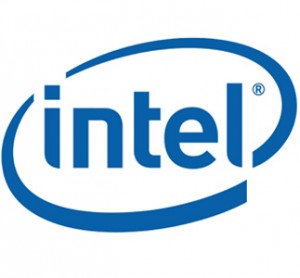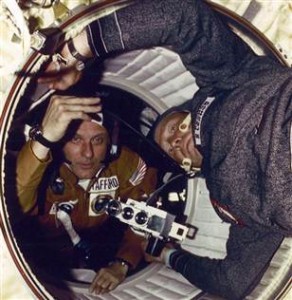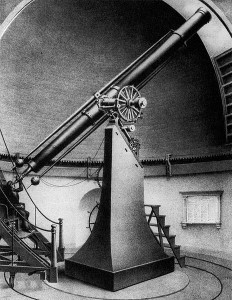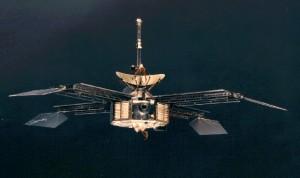Intel Founded
 July 18, 1968
July 18, 1968
Robert Noyce, Andy Grove, and Gordon Moore incorporate Intel in Santa Clara, California to build microprocessors. Their first processor, the 4004, was released in 1971 for use in calculators. IBM’s choice of Intel’s 8088 processor for use in the IBM PC led to Intel’s emergence as the premier manufacturer of processors still to this day.
🥳 Happy World Emoji Day! 🌎🎉📅
July 17, 2014
Jeremy Burge, founder of Emojipedia, creates World Emoji Day, a celebration of emojis, the now ubiquitous icons we use in text communication to visually represent emotional cues. Burge chose the date of July 17th because Apple’s emoji for calendar displays July 17, in reference to the date that Steve Jobs originally introduced Apple’s iCal software.
World Emoji Day has become so popular that it has influenced the design of the calendar emoji on other platforms. Originally, companies other than Apple used a variety of dates on their calendar emoji. As World Emoji Day grew in popularity, the various dates caused confusion. So as of the writing this article in 2023, most major platforms now display July 17 on their calendar emoji. Microsoft and Facebook being notable exceptions 📅🙄
Apple Introduces iCal 📅

July 17, 2002
Steve Jobs introduces Apple’s now ubiquitous calendaring software, originally named iCal, for Macintosh computers. At the time, it was an innovative advancement in calendaring software for the Mac, allowing internet sharing of calendar data and letting users manage multiple calendars. It also took advantage of the then-new Apple iSync technology to sync their calendars to Bluetooth-enabled mobile phones, PalmOS devices, and the Apple iPod so users could access their calendars on the go.
iCal became a mainstay for Mac users but it achieved mainstream usage starting with the release of the iPhone in 2007. Since the operating system of the iPhone (called iPhone OS at the time, later renamed iOS is 2010) is at its core identical to the Mac OS X operating system, much of the software that runs on the Mac OS can easily be ported to the iPhone, iCal included. Apple, however, called the iOS version simply “Calendar”. Apple renamed iCal on the Mac OS to match the iOS name in 2012 with the release of Mac OS X Mountain Lion.
Originally released as free standalone download, iCal was not actually available until September of that year and then bundled as part of the Mac OS in the next year. However the date of July 17th has become very important in technology history because it was used as the basis of World Emoji Day, started in 2014. This date was chosen because the emoji that Apple created to represent a calendar has always shown the date July 17th, in recognition of the date that the original iCal software was introduced.
Apollo and Soyuz Dock
 July 17, 1975
July 17, 1975
Apollo 18 and Soyuz 19 successfully dock in orbit and the astronauts and cosmonauts shake hands. This marks the first time in history that spacecraft of two nations dock in space.
Brown Box Demonstrated to Magnavox VP
 July 17, 1970
July 17, 1970
Ralph Baer demonstrates the video game system he invented, simply called the “Brown Box”, to Magnavox engineering, production, and marketing management in Ft Wayne, IN. Previously Baer had demoed the Brown Box to many other TV manufacturers including RCA, GE, Zenith, Sylvania, and Magnavox themselves without any licensing agreements. A licensing agreement with RCA was written but cancelled in March of that year. It was this demo with Magnavox’s VP of Marketing present that would eventually lead to creation of the first home video game system, the Magnavox Odyssey, and the birth of the video game industry.
First Photograph of a Star
 July 17, 1850
July 17, 1850
The first photograph of a star is taken at the Harvard Observatory. The star photographed was Vega in the Lyra constellation, the 2nd brightest star in the Northern Hemisphere.
Apollo 11 Heads for the Moon
 July 16, 1969
July 16, 1969
Apollo 11 is launched from Cape Kennedy, Florida, on the way to becoming the first space mission to land men on the Moon.
Nintendo Releases Famicom
 July 15, 1983
July 15, 1983
Nintendo releases their Famicom system, short for “Family Computer,” in Japan. The Famicom would be slightly modified with a copy protection system, a redesigned chassis, a front loading cartridge mechanism, and released in North America just over two years later as the Nintendo Entertainment System (NES). The Famicom/NES system would become one of the most influential game systems ever produced, making Nintendo the premier company in the video game industry during the late 1980’s and early 1990’s, picking up the mantle where Atari left off.
First Mars Fly-By

July 14, 1965
NASA’s Mariner 4 becomes the first spacecraft to perform a successful fly-by of Mars and the first to send back photographs of another planet from deep space. The photographs are the first showing details of Mars’ surface including extensive cratering.
Code Red Worms its Way into the Internet
 July 13, 2001
July 13, 2001
The Code Red worm is released onto the Internet. Targeting Microsoft’s IIS web server, Code Red had a significant effect on the Internet due to the speed and efficiency of its spread. Much of this was due to the fact that IIS was often enabled by default on many installations of Windows NT and Windows 2000. However, Code Red also affected many other systems with web servers, mostly by way of side-effect, exacerbating the overall impact of the worm, ensuring its place in history among the many malware outbreaks infecting Windows systems in the late 1990’s and early 2000’s.
